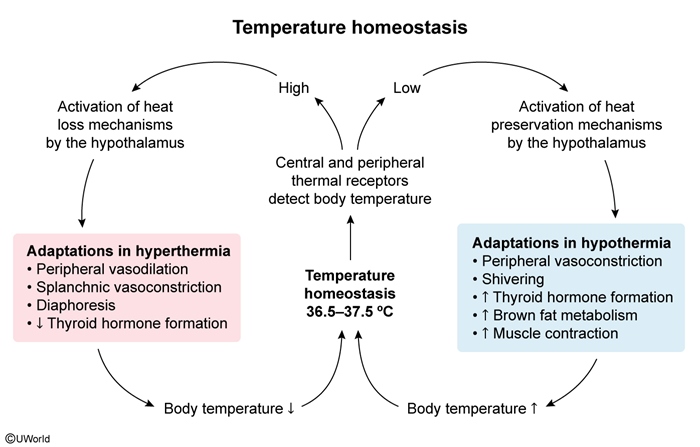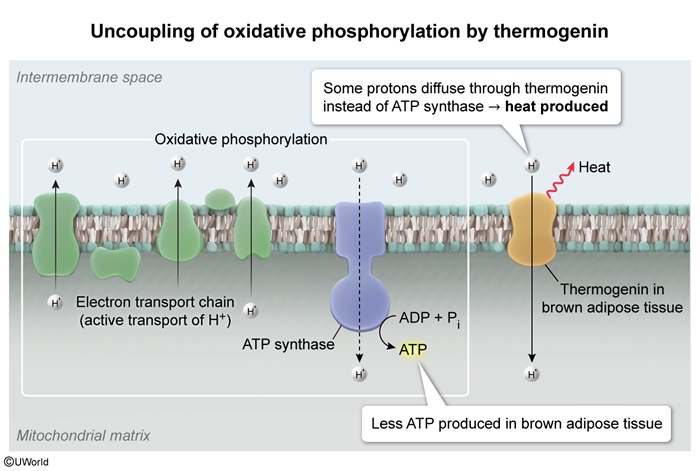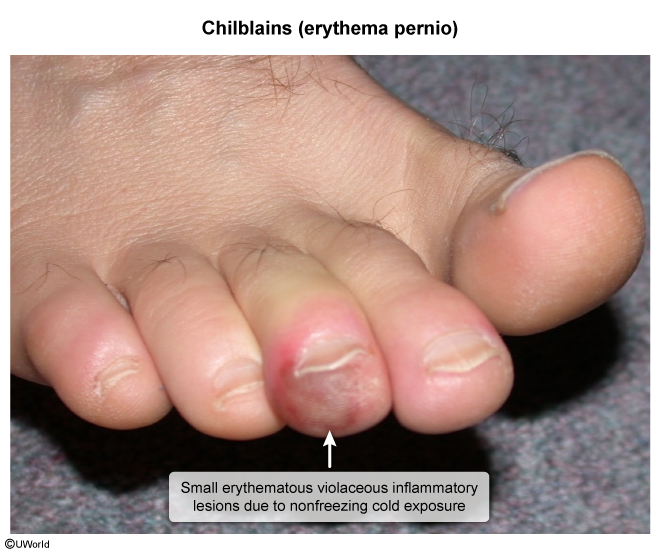Cold Injuries
Article Sections
Introduction
This article discusses systemic (hypothermia) and local (frostbite) cold injuries.
Hypothermia
Accidental (ie, environmental) hypothermia is caused by cold exposure. Secondary causes of hypothermia (eg, myxedema, sepsis, adrenal insufficiency) are discussed in other articles.
PathophysiologyCore body temperature is sensed by the anterior hypothalamus, which defends against hypothermia (ie, core body temperature <35 C [95 F]) through several mechanisms (Figure 1).
- Shivering
- Nonshivering thermogenesis: heat generated from brown adipose tissue (eg, mainly adjacent to the heart and great vessels). Upregulation of the mitochondrial uncoupling protein (UCP1) dissipates the proton gradient as heat (ie, instead of ATP) (Figure 2).
- Peripheral vasoconstriction: blood shunted toward internal organs.
- Behavioral thermoregulation (eg, keep moving, seek shelter).
These mechanisms can be overwhelmed during prolonged exposure to cold. Severe hypothermia is most often found when one or more of the following clinical risk factors are present:
Continue Learning with UWorld
Get the full Cold Injuries article plus rich visuals, real-world cases, and in-depth insights from medical experts, all available through the UWorld Medical Library.
Figures


Images
